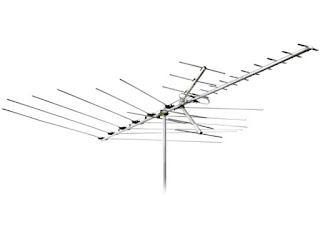That was over a decade ago. If I were to cut the cord today, would I save that much? Would I save anything at all? I feel that I would, but I haven't run the numbers. Until now.
There are a couple of ways looking at this. I'm going to look at a scenario where I've been a cable TV user for some time, and comparing the cost to switching to streaming. And, since I'm not a gamer, I'm going to consider an Internet speed that is sufficient for streaming, but may not suffice for heavy gaming.
I'm a Comcast/Xfinity customer, and I'm using their plans to check this. Currently, a plan with 50 mbps service with 125 cable channels, including local channels, is $109/month plus tax. Oh, the broadcast fees and regional sports fees add another $29.30/month to this, bringing this to $138.30/month, plus tax.
Now, during the first year, with a one-year agreement, there is a $29/month discount.
Also, the 125+ channels package has less than 125 channels if you don't count the music audio only channels, and you don't double count the channels with both an SD and and HD feed. Taking the audio-only music channels, and not double-counting the SD/HD feeds, there are 112 channels. Take out the local channels and you're left with 93 channels that you can't get with an antenna.
My current Internet only 50 mbps service is $49/month. That's it.
Okay, there is more, because we have to add TV channels. There are a couple of ways to do this. I'm close enough to some TV towers to pick up 25 over the air channels reliably. There are more channels I can occasionally pick up, but I'm ignoring those channels. I'm only looking at channels I can pick up. I get 25 local channels. That's six more local channels than Comcast/Xfinity cable offers.
So, what if I add a streaming service to get those other channels, what's the cost? Well, before I go down that road, I need to determine if I really want all those channels. And a quick look shows that I don't.
Of course, I don't care about any of the cable channels outside college football season, but others might. So, what service gets someone what they want?
There are three categories of live-streaming cable replacement services. One category has no news, sports, or local channels. Another category has news and sports but no locals. One category has news, sports, and locals.
If you feel you really need local channels because you don't or can't have an antenna, you probably feel you need the third category. As of this writing, those services, and starting prices, are:
- YouTube TV ($65/month)
- Fubo TV ($65/month)
- Hulu+Live TV ($70/month)
- DirecTV Stream ($70/month)
If you have an antenna, or otherwise don't care about local channels, then it comes down to whether or not you want news and sports.
If you do, then you have one option: Sling TV ($35/month).
If news and sports aren't important, but you still want cable channels, then your best options depend on just what you want. You have three main options, depending on the channels in your wish list:
- Frndly.TV ($7/month)
- Philo ($25/month)
- Sling TV ($35/month)
Yes, I know I included Sling TV in two categories, but the fact is, they have some popular channels that Philo and Frndly.TV don't have. Look into the channels you want, really want, and pick the cheapest one that meets your needs. For example, if Hallmark is a must-have, you may be able to get by with Frndly.TV ($7/month). Or, if HGTV is your must have, then Philo ($25/month) is your best option. And, if USA is your must-have, that means Sling TV is your cheapest option.
Of course, you don't have to subscribe to any service year-round. You can subscribe to a service for 30 days only, then cancel if other services will suffice. By other services, I'm talking bout Netflix, Hulu, HBO Max, Disney+, Discovery+, or others.
That's an important thing to consider. There's no year-long commitment to any streaming service, whether a live or on-demand service. You can subscribe to a single service for a month, then change to another.
For me, I'm saving a lot of money by streaming instead of having cable. I don't need a live streaming service year-round. I don't need an on-demand service year-round, and there are enough to swap around month to month.
Will you save money? Or ar you already saving money? If you plan things right, you may be able to save a lot of money in your Streaming Life, and use that money for something, or someone, else. Valentine's Day is coming, after all.










